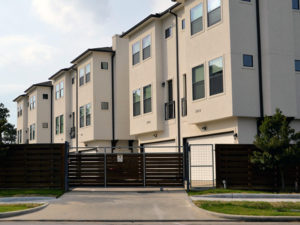Will Work from Home Continue Post-COVID?

The COVID-19 crisis has hammered the hospitality industry. But as more and more Americans get vaccinated, there is “light at the end of the proverbial tunnel.” But what is the post-COVID era going to look like for the hospitality industry?
There is pent-up demand in the vacation and personal travel sector. That sector may be the first portion of the hospitality market to rebound.
What about business travel? Here’s what business travel in the U.S. looked like in 2019.
- Business travelers spent $334.2 billion in 2019.
- Of that amount, $139.3 billion was spent on meetings, events, and incentive programs (ME&I).
- Americans completed 464.4 million business travel person‐trips in 2019 — with 38% being for events and meetings.
The way that businesses conduct their businesses has changed since the COVID-19 pandemic began. What changes are likely to become permanent parts of the way businesses conduct their operations? So we have to ask the following question.
Will Work-from-Home Continue Post-COVID?
Working remotely, i.e., from home, has been well-received by employees — and employers have found that employees are more productive working from home than from the office.
No one can accurately predict what our post-COVID workforce will become. But forecasts, trends, and surveys point towards more employees working remotely than before the pandemic. Why does the evidence appear to point in that direction?
- A McKinsey survey of 278 corporate executives revealed that they plan to reduce their office space by 30%.
- After a year of utilizing videoconferencing, businesses have discovered that virtual meetings are an effective way of communicating and training.
- A recent survey revealed that almost 30% of remote-working employees indicated that they would leave their job if they aren’t allowed to continue working remotely.
- 61% of currently work-from-home employees want to continue working remotely.
HR professionals see that white-collar employees view flexible working options as a “basic” part of an employment package, much like having a 401K. Companies who don’t offer flexible working options may find recruitment more difficult.
The desire to continue working from home varies by industry — less than 10% of distribution center remote employees would consider leaving their job if they couldn’t continue working remotely. Yet, 35% of information technology workers say that they would find a new employment opportunity to continue working remotely.
Remote-employees cite several reasons for their preference to continue to work-from-home.
- Flexibility — 64%
- Work-life balance — 44%
- Feel safer — 40%
- Increased productivity — 29%
- Able to acquire new work skills — 10%
The best guesstimate is that employers and employees will settle into a blended workplace arrangement, working remotely for part of the week and from home for the remainder of the workweek.
Who are the Business Travelers?
The long-term impact of working from home may turn out to be minimal. There is no doubt that the hospitality industry won’t see a rebound in corporate events and meetings in the short term. Yet, there are reasons to be optimistic for the future.
Let’s look at some facts about business travelers in the U.S.
- Pre-pandemic, there were roughly 1.3 million business travelers every day.
- 45% of business travelers are female.
- The majority of business trips are less than 250 miles.
- Business travelers are about 40% of total hotel guests.
- Over 50% are over 45.
- Two-thirds have a bachelor’s degree.
- 53% are in managerial, professional, or technical positions.
In the coming years, the influence of millennials will begin to emerge in business travel. Millennials now exceed the number of Baby Boomers — millennials comprise 31.5% of the U.S. population. 65% of Millennials see business travel as a status symbol and evidence of their worth to their company. Millennials may conjure up reasons for a business trip when given a choice — these travelers average four business trips annually.
As more Boomers retire and Millennials move up the corporate ladder, the hospitality industry can expect to see their mix of corporate travelers change, leading to increased business travel.
Advantages of Employee Travel
Some experts predict that work-from-home implementation eliminates the need for business travel. However, statistics indicate otherwise. According to the Harvard Business Review, a face-to-face encounter is 34 times more effective than electronic communications. ROI for business travel returns $12.50 for every dollar invested, leading 90% of business leaders to deem that corporate travel is crucial to corporate growth. Business/corporate travel has five major purposes:
- Pitch new products or services, either one-on-one or at conferences/trade shows
- Meet/collaborate with co-workers off-site or at another company location
- Professional development and/or training
- Meet with other companies for collaborative ventures
- Recruit new employees and retain existing employees
The reasons for travel transcend the scope of videoconferencing. Videoconferencing is an ideal solution for management-to-employee and employee-to-employee routine communication. Videoconferencing can replace a daily or weekly staff meeting.
However, videoconferencing lacks the spontaneity and immediacy that face-to-face meetings provide.
Pent-Up Demand
Employees are people. After over a year of work-from-home (WFH), almost everyone yearns for a return to “normalcy.” The new normal may not be quite like it was before COVID. There will be a period of transition, relaxation of restrictions will vary depending on your state and local restrictions.
Domestic business travel may rebound — especially as hotels begin to recognize the potential of providing meeting facilities that conform to the local COVID protocols for in-person meetings. The hospitality industry is uniquely positioned to be part of transitioning back to normal by offering:
- Socially-distanced seating
- Sufficient room for social distance traffic markers
- A sanitizer team/staff
- Single-use products
- Access to food and beverage vendors
- AV equipment
WFH employees are weary of the daily drudge and will, likely, embrace work and industry events conducted at hospitality facilities that are spacious and receptive to following local COVID protocols as the U.S. transitions to a post-COVID new normal. The time to plan for post-COVID is now.
Sources
https://www.mckinsey.com/featured-insights/future-of-work/the-future-of-work-after-covid-19#
https://www.ustravel.org/answersheet
https://www.stratosjets.com/blog/business-travel-statistics/



